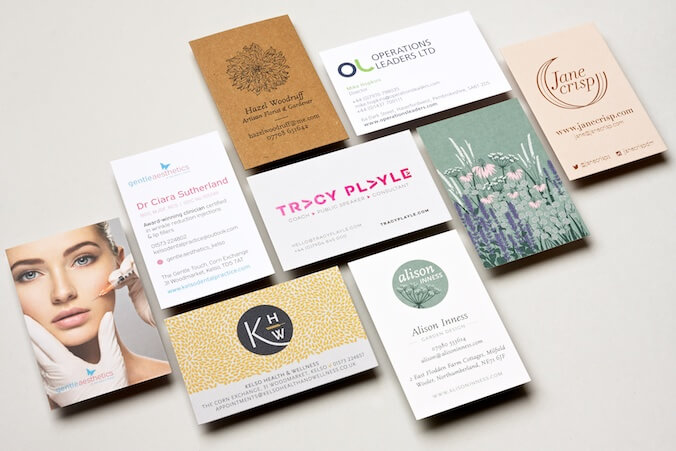
Why is business stationery important?
Friday 31 July 2020
Different design, typography, paper and finishes create a very different impression

Friday 31 July 2020
Different design, typography, paper and finishes create a very different impression
Your business stationery is a tangible representation of your brand. Handed over at an initial meeting, your business card forms the first impression of your company in the mind of your potential client. And unless you follow up with other printed marketing materials, it could be their only physical reminder for some time.
Stationery’s primary function is as a vehicle to communicate your message. But your business card, letterhead and compliments slips say much more about you and your business than the information that is written on them.
It’s an effect that will be repeated every time you communicate with your client. Get it right, therefore, and it’s an ideal opportunity to make a positive initial impact and create a great lasting impression.
Using professional-looking stationery demonstrates that you are taking your business seriously. But we don’t only receive information via our eyes – our sense of touch is just as important.
So consider – how does your business card feel in your hand? How thick is the paper? Is it smooth or textured? Rigid or flimsy? A poor-quality business card says a lot about a business – none of it good!
It is possible to produce stationery very cheaply. But if you want to make a good impression, then quality is really important. There are four aspects to consider – design, materials, print, and finishing.
All four elements are equally important, and compromising on just one will spoil the overall effect. A beautiful design printed on a lovely stock will be ruined by poor-quality print or finishing. And you can never compensate for poor-quality design with luxurious paper or finishes.
Good business stationery doesn’t need to be expensive, however – it is possible to produce it within a budget. As with many things, the focus should be on getting the best value for money.
Design If you’re designing your business stationery, then focus on keeping the design clear and simple. Follow the visual identity guidelines for typefaces and colours, and take particular care not to distort your logo.
If you’re hiring a freelance graphic designer to produce your business stationery, then make sure they understand both your brand and your production budget before they begin. Ask them to achieve maximum value for money, rather than the lowest costs.
Materials You should pay close attention to the colour, finish, thickness and rigidity of the stock you use. Think about the message you want to send, and how the finished items will feel in your hand. Always assess materials at their finished size. For example, cut the potential business card stocks down to the same size as your business card. And don't be afraid to ask about similar alternatives – there are often options which feel very similar for less money. Don’t forget you may need to be able to source matching paper for continuation sheets.
Production To keep costs down and quality up, consider litho printing one or two spot colours rather than printing four colours digitally.
Spot colours are the best way to achieve colour accuracy. And your corporate stationery is one of the most important places for your brand colours to be reproduced accurately. If you limit yourself to one or two colours, then spot colours need not be prohibitively expensive. For more information about spot-colours see my blog post Learning your colours.
Finishing Nothing is more disappointing than a beautiful business card which has been spoiled at the last minute by wonky or rough trimming. Printers do work within production tolerances, but edges that are less than sharp indicate a blunt blade. And wonky cutting suggests a lack of care and attention. So if your business cards aren’t straight, or they’re decidedly furry around the edges, it’s time to pick up the phone.
If you would like any help to create a professional suite of business stationery, just get in touch.
Recent posts
Featured posts

Hello! I’m Sarah, an independent typographic designer, helping businesses to communicate their unique selling points through printed marketing and communications.
I’ve been sharing my knowledge about design, typography, marketing, branding and printing since 2014. I hope you enjoy reading my blog.

Sarah Cowan